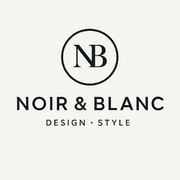Comparing Traditional vs. Digital Room Makeovers: Which is Right for You?
The Basics of Traditional Room Makeovers
Traditional room makeovers have been a staple for homeowners for decades. These makeovers typically involve a complete overhaul of the space, often including new furniture, fresh paint, and updated decor. The process is usually hands-on, requiring the physical presence of designers and contractors. This approach allows for tactile decision-making and ensures that every detail is customized to the homeowner's preference.
One of the main advantages of traditional makeovers is the ability to see and feel materials before making decisions. From fabric swatches to paint samples, homeowners can get a true sense of the final product. This tactile experience can be crucial for those who prefer to engage with the design process physically.

The Rise of Digital Room Makeovers
In recent years, digital room makeovers have gained popularity, offering convenience and flexibility that traditional methods often lack. These makeovers are typically conducted online, with virtual consultations and 3D modeling tools that allow homeowners to visualize changes before they occur. This method is especially appealing to tech-savvy individuals and those with busy schedules.
Digital makeovers often involve the use of sophisticated software that can simulate different designs and layouts. This allows homeowners to experiment with various styles and configurations without committing to physical changes. Moreover, digital tools can offer immediate feedback on how different elements will look together.

Cost and Time Considerations
When comparing traditional and digital room makeovers, cost and time are significant factors to consider. Traditional makeovers often require a larger budget due to labor costs and material expenses. Additionally, they may take longer to complete, depending on the scope of the project.
In contrast, digital makeovers can be more cost-effective. By eliminating the need for on-site consultations and reducing material wastage through accurate planning, homeowners may find this approach more budget-friendly. Furthermore, the ability to make quick changes digitally can significantly reduce the project timeline.

Customization and Personalization
Both traditional and digital makeovers offer opportunities for customization, but they do so in different ways. Traditional makeovers allow for a high degree of personalization through bespoke furniture and tailor-made solutions. Designers can create unique pieces that fit the specific dimensions and aesthetic of a room.
Digital makeovers also offer customization, primarily through virtual tools that let homeowners experiment with different looks before making final decisions. While this approach may not offer the same level of bespoke craftsmanship as traditional methods, it provides a broader range of options for those looking to explore various styles.
Which Option Suits Your Lifestyle?
Deciding between traditional and digital room makeovers depends largely on individual preferences and lifestyle needs. For those who enjoy hands-on projects and have the time to invest, traditional makeovers may be more satisfying. They offer a tangible experience that some find rewarding.
On the other hand, if convenience, speed, and flexibility are top priorities, a digital makeover might be the better choice. This method allows for easy experimentation and quick adjustments, making it ideal for busy individuals or those who prefer a more streamlined approach.

